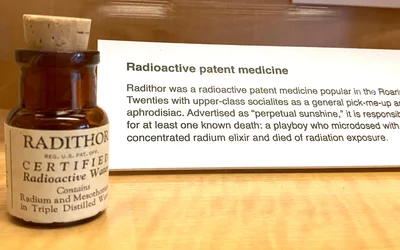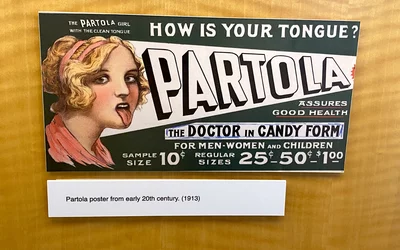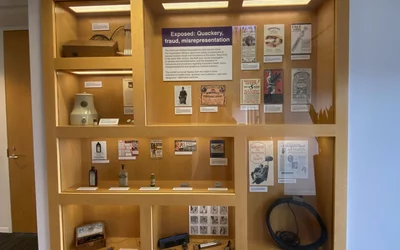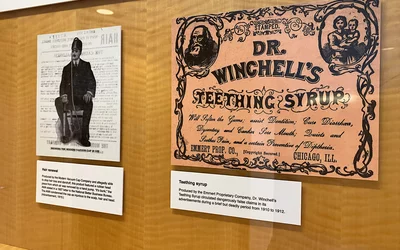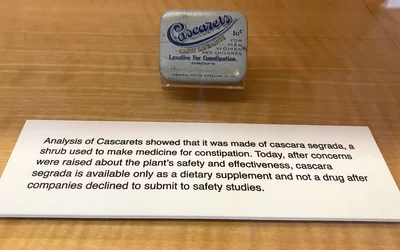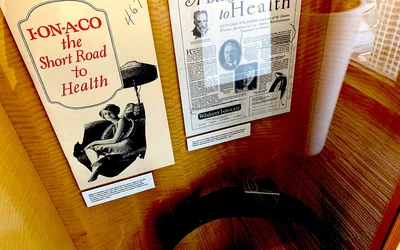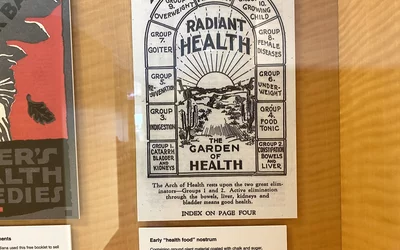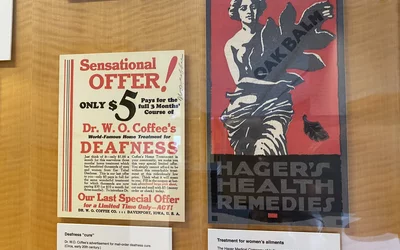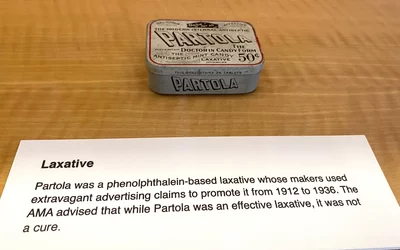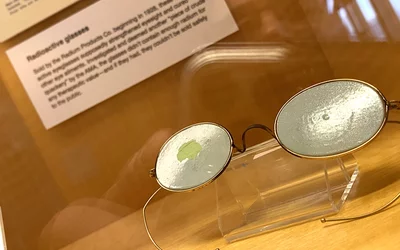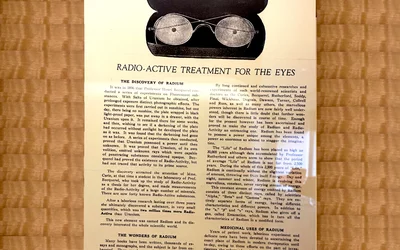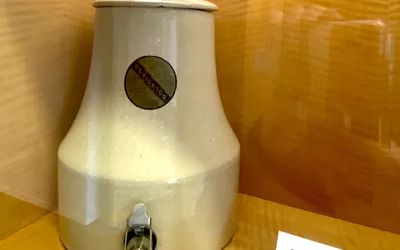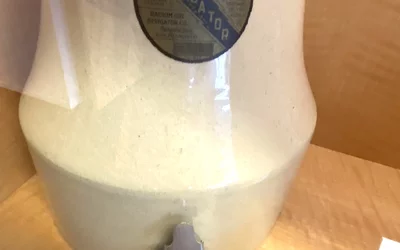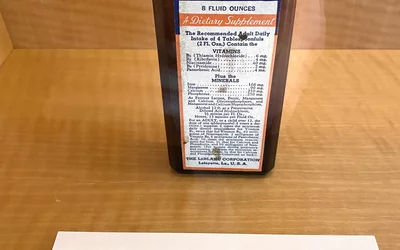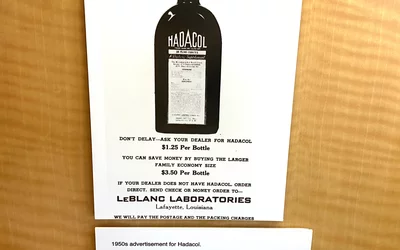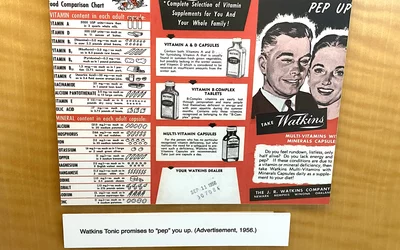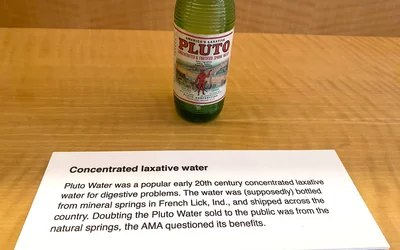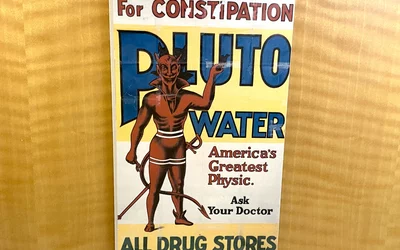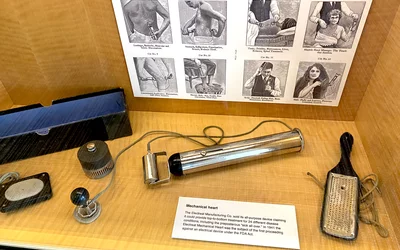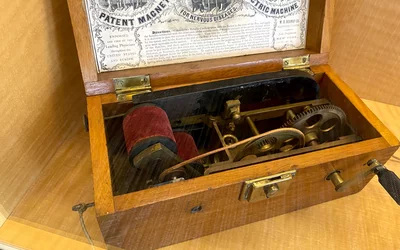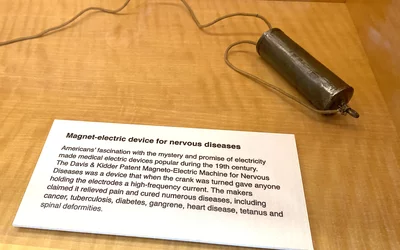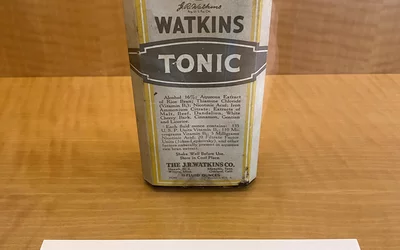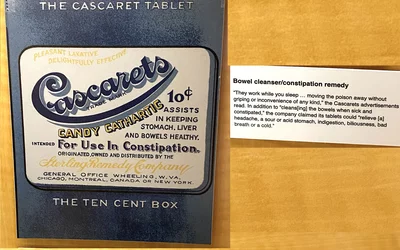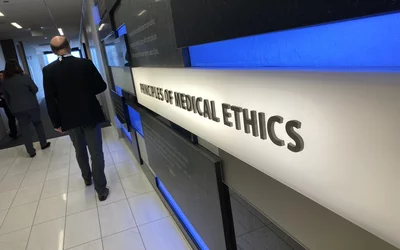PHOTO GALLERY: AMA display of medical quackery and ineffective, dangerous alternative medicine
The American Medical Association (AMA) has a collection of artifacts on health fraud, quackery and ineffective—and often dangerous—alternative medicine at its Chicago headquarters office. These photos show part of that collection.
More than 100 years ago, the AMA took a stand and called for physicians to expose medical frauds and charlatans to the public. In the early 20th century, the AMA began investigating devices and advertisements to expose vendors and individuals making fraudulent medical claims, misrepresentations and dangerous medical quackery. This effort was aimed at education to show the public and physicians fraudulent and sometimes dangerous medical claims.
Read a short history of quackery in the AMA website.
Click on the photos to enlarge and see them full frame.Hover over images to read the captions.
A bottle of the radioactive radium laced medicine Radithor. It was sold was a "pick-me-up" drug and aphrodisiac during prohibition in the 1920s for young socialites. It led to at least one known death from radiation poisoning. Part of the medical quackery display at the AMA headquarters in Chicago. Photo by Dave Fornell
Left, an early 20th century advertisement for a hair growth device that the AMA fought to remove from the market because because it did not work and it caused damage to the patient's scalp, hair and head. Right, a teething syrup marketed for children that included dangerous, even deadly, false claims between 1910-1912.
The drug Cascarets was made of cascara segrada, a shrub used to make medicine for constipation. However, after concerns were raised about the plant's safety and effectiveness, cascara segrada is available today only as a dietary supplement and not a drug after companies declined to submit to safety studies.
The I-ON-A-CO electromagnetic device was advertised as a cure all for many medical conditions in the 1920s and cited science that was not sound and made claims that the device was not capable of. The AMA said it is a perfect example of medical quackery where an entrepreneur did a very good job of selling a very expensive product that promised to deliver medical therapy and actually did nothing.
Hadacol was a dietary supplement and a general cure-all that contained 12% alcohol, which enabled it to become a successful product in dry counties in the South. Founded by Louisiana state Sen. Dudley LeBlanc, he sold the company in 1951 after the AMA went after. The company went bankrupt when it was shown LeBlanc had spent more on advertising than the company actually took in as profits. These candles cost him the 1952 governor's race. A 1951 AMA press release stated, "It is hoped that no doctor will be uncritical enough to join in the promotion of Hadacol. It is difficult to imagine how one could do himself or his profession greater harm from the standpoint of the abuse of the trust of a patient suffering from any condition. Hadacol is not a specific medication. It is not even a specific preventive measure."
Americans' fascination with the mystery and promise of electricity made medical electric devices popular during the 19th century. The Davis & Kidder Patent Magneto-Electric Machine for Nervous Diseases was a device that when the crank was turned gave anyone holding the electrodes a high-frequency current. The makers claimed it relieved pain and cured numerous diseases, including cancer, tuberculosis, diabetes, gangrene, heart disease, tetanus and spinal deformities.
"They work while you sleep ... moving the poison away without griping or inconvenience of any kind," the Cascarets advertisements read. In addition to "cleansing the bowels when sick and constipated," the company claimed its tablets could "relieve headache, a sour or acid stomach, indigestion, biliousness, bad breath or a cold." Today the active ingredient, cascara segrada, is only available as a dietary supplement and not a drug after companies declined to submit to safety studies.
The AMA headquarters office in Chicago has a wall dedicated to medical ethics, which is at the core of the association's mission. It summarizes the principles of medical ethics that have guided the AMA for the past 100 years in challenging medical quackery and enforcing guidelines to professionalize the field of medicine.
Related Content:

Dave Fornell has covered healthcare for more than 17 years, with a focus in cardiology and radiology. Fornell is a 5-time winner of a Jesse H. Neal Award, the most prestigious editorial honors in the field of specialized journalism. The wins included best technical content, best use of social media and best COVID-19 coverage. Fornell was also a three-time Neal finalist for best range of work by a single author. He produces more than 100 editorial videos each year, most of them interviews with key opinion leaders in medicine. He also writes technical articles, covers key trends, conducts video hospital site visits, and is very involved with social media. E-mail: dfornell@innovatehealthcare.com
























